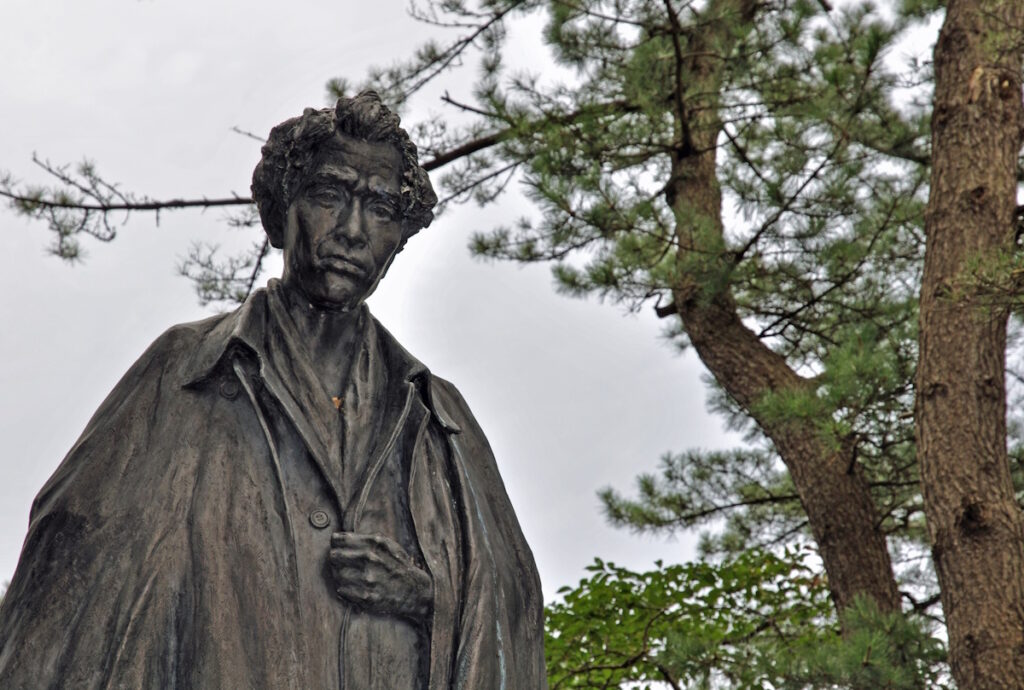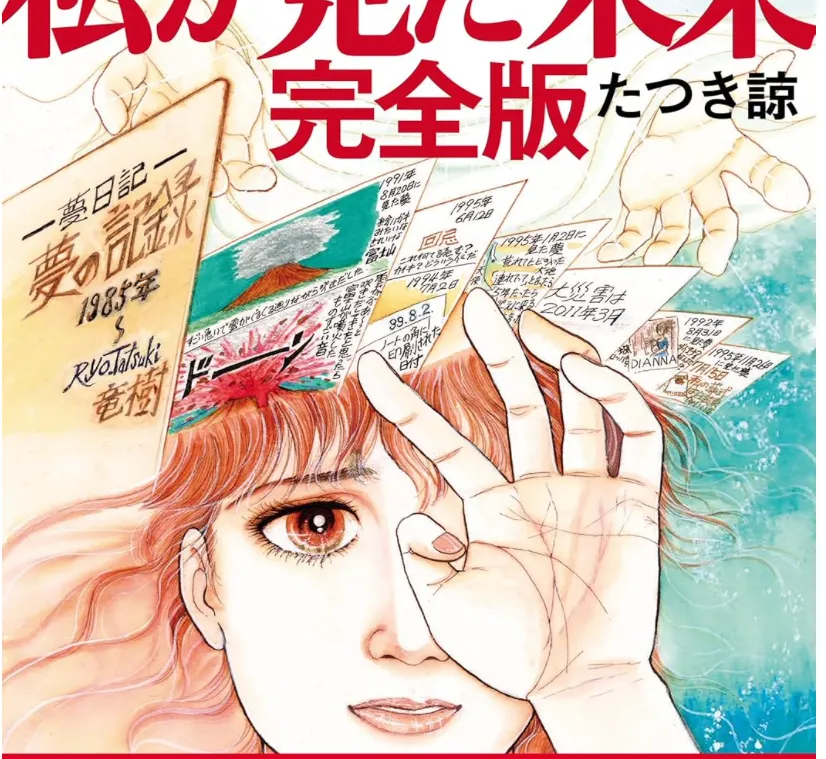As March approaches, fans of the massively popular virtual YouTuber agency Hololive are gearing up for the event of the year. Hololive Super Expo 2025, sponsored by Bandai, is a major trade exposition for the VTuber industry; for two days, from March 8th to 9th, the famed Makuhari Messe convention center in Chiba Prefecture, near Tokyo, will play host to themed booths, exhibits, and tech demos. With cosplayers and merch galore, the Hololive Super Expo offers a unique chance for fans to hobnob with industry insiders in a non-virtual space.
Never heard the term “VTuber?” Well, then, you’re likely not headed to the expo. But for those out of the loop, Virtual YouTubers are part of a massive trend of influencers who feature in videos using a fictional animated model. The appealing designs, usually presenting as preternaturally cute anime characters, are mapped onto their physical movements in real-time. Vtubers can have massive followings in the millions and an extremely devoted fanbase.
Hololive is perhaps the most famous of the agencies that manage Vtuber talent. With over 90 Vtubers in their stable speaking three languages (Japanese, Bahasa Indonesia, and English), the company boasts a massive 80 million total subscribers. Among their most popular characters are shark-girl Gawr Gura, pirate Houshou Marine, and bunny girl Usada Pekora.
The Hololive Super Expo takes place at Makuhari Messe, located about 50 minutes out of central Tokyo. (For most, this will mean a 39-minute ride from Tokyo Station on the Keiyō Line followed by an 11-minute walk.) In other words, there’s a whole world of opportunities for the Holofan to engage with in the Japanese capital. Let’s take a look at some options!
Do Some Serious Shopping in Akiba

If you’re reading this, you’ve likely heard of Tokyo’s legendary Akihabara neighborhood. This a great area to wander around to get a sense of Tokyo and Japan’s anime, manga, and tech obsession. Cosplay-wearing waitresses stand on the street, attempting to get clients to come into their maid cafes; anime (and these days, Vtuber) billboards loom over everything. Just a few minutes on the Yamanote loop line from Tokyo Station, it’s pretty much a required destination for fans.
To get a sense of the various subcultures at play in Akihabara (“Akiba” for short), check out Akihabara Radio Kaikan. You’ll pass under the iconic yellow-and-red signage and find floors of hobby shops devoted to a wide variety of Japanese nerd culture. There are numerous floors here, and the building can be explored at length.
If you’re in town for the Hololive Super Expo, the third floor might be most interesting. The entire space here is devoted to an incredibly wide range of character merch to show off your faves to the world; badges, stickers, plushies, folders, and more are adorned with everyone from Gawr Gura to Oozora Subaru. Search deeper into the building’s numerous mall spaces, and you may even find craft cola and wine-themed after bunny-adjacent Vtuber Usada Pekora.
Check out a VTuber Bar
Across town from Akiba is Tokyo’s more up-and-coming otaku holy land: Ikebukuro. In addition to all the quality merch you can find ’round the station area in places like the famed K Books, Ikebukuro also offers a truly unique mode of nightlife. Welcome to the world of VTuber bars.
Ikebukuro’s own VLiverLab allows you to drink while interacting directly with virtual, digital avatar ensconced bartenders. There’s an entire rotating cast of bartenders with their own designs and character quirks; you sit facing a digital screen featuring the bartenders in question. Like the classic non-digital host clubs or girls bars, you pay an hourly seating fee, and order drinks for yourself and, if desired, the bartender. You can also purchase a cheki (a Polaroid photo taken with the cast member of your choice.
Planning a trip to Japan? Get an authentic, interpreted experience from Unseen Japan Tours and see a side of the country others miss!

"Noah [at Unseen Japan] put together an itinerary that didn’t lock us in and we could travel at our own pace. In Tokyo, he guided us personally on a walking tour. Overall, he made our Japan trip an experience not to forget." - Kate and Simon S., Australia

See a side of Tokyo that other tourists can't. Book a tour with Unseen Japan Tours - we'll tailor your trip to your interests and guide you through experiences usually closed off to non-Japanese speakers.


Want more news and views from Japan? Donate $5/month ($60 one-time donation) to the Unseen Japan Journalism Fund to join Unseen Japan Insider. You'll get our Insider newsletter with more news and deep dives, a chance to get your burning Japan questions answered, and a voice in our future editorial direction.
We covered the experience at VLiverLab in more depth here; give it a read to see if this unique Vtube experience sounds up your alley. VLiverLab isn’t the only Vtube themed nightlife spot, either.
Akiba features a club/bar space with a line-up of male Vtubers called AstLive Men’s Vtuber MensCon Cafe. (あすとらいぶメンズVチューバー 秋葉原 メンズコンカフェ.) They claim to mesh the boundaries between the 2nd and 3rd dimensions with their “sultry voiced” male Vtuber cast. (The bar also serves as a training facility for upcoming talent, helping them learn to interact with fans.)
This location, too, functions like a host club, with a ¥2000 cover per hour of chatting with the cast. Note that we’ve yet to visit AstLive, so we can’t vouch for the experience there.
Worth mentioning is that both of these spaces aren’t exactly English-language friendly. However, they’re great locations to flex your Japanese linguistic muscles in a VTube environment.

VLiverLab demonstrates how their bar set-up works in this pic from their official account.
More Nightlife Exploits

The nightlife appeal for fans isn’t limited to Vtuber bars, where Japanese knowledge is a must. There’s also Akihanaba’s MOGRA, a club devoted to anime and general otaku culture. Just look at this self-description: “MOGRA is a DJ event space that demolishes the walls between Japanese pop music/club music and anime songs, idol music, game music, etc., allowing for new viewpoints and enjoyments.”
March at MOGRA is already looking stacked. Other than Mondays, their weekly day off, most nights have scheduled events already filled in. Every Tuesday, for example, MOGRA hosts the A-Pop Bar, where a variety of DJs “…play a wide range of songs from anime, voice actors, and self-published tunes from across the decades!” Door is ¥1000, with a free drink, and tacos and other food are served, too. Other nights focus on ani-song oldies, Vocoloid raves, and jukebox otaku parties.
Planning a trip to Japan? Get an authentic, interpreted experience from Unseen Japan Tours and see a side of the country others miss!

"Noah [at Unseen Japan] put together an itinerary that didn’t lock us in and we could travel at our own pace. In Tokyo, he guided us personally on a walking tour. Overall, he made our Japan trip an experience not to forget." - Kate and Simon S., Australia

See a side of Tokyo that other tourists can't. Book a tour with Unseen Japan Tours - we'll tailor your trip to your interests and guide you through experiences usually closed off to non-Japanese speakers.


Want more news and views from Japan? Donate $5/month ($60 one-time donation) to the Unseen Japan Journalism Fund to join Unseen Japan Insider. You'll get our Insider newsletter with more news and deep dives, a chance to get your burning Japan questions answered, and a voice in our future editorial direction.
All this is within a full-blown, classic Tokyo underground club space. Flashing lights and anime art and scrawled characters graffiti abound. If you’re part of the scene and enjoy dancing in the dark with fellow enthusiasts, MOGRA is likely a must-do. More music and nightlife options abound in the vastness of Tokyo’s evening hours; you could make a visit to one of the more legendary underground clubs in youthful Shimokitazawa: Shelter. This is a great place to get a feel for Tokyo’s massive, youth-oriented underground music scene. (Popular anime Bocchi the Rock also used it as one of its various real-life settings.) Entry is usually around ¥4000.

Limited-Time Exhibits
In addition to all of these more permanent destinations, there’s also those of a more impermanant nature. Take, for example, the Hololive AVIOT VTuber pop up shop ongoing at Shibuya MODI until mid-Febuary. The same district also recently saw the “Disney Collection by Mika Pikazo” pop-up at the famed Tsutaya on the Shibuya Scramble. While much of Hololive’s attention for the month of March will be aimed at the Super Expo, we can still expect other pop-ups and displays to be announced in the coming months.
Tokyo’s sheer scope can be overwhelming, but when it comes to the Vtube and Hololive scene, there’s no place quite like it. In addition to everything mentioned here, you can expect to encounter ads and merch in the most unlikely places. Keep you eyes open, and you’ll soon find yourself having an incredible time in the Japanese capital.
Thanks to Holofan and discord user MMMaellon for sponsoring this article!

Why this page doesn't look like crap
You may notice a few things about this page. First, it’s mostly content – not ads. Second, this article was written by a human, not a plagiaristic Turing machine.
Unseen Japan is a collective of independent authors. We work hard to keep our content free of intrusive ads and AI slop.
Help us keep it that way. Donate to the Unseen Japan Journalism Fund to support our work. Regular donors will receive Insider, our paid newsletter with weekly bonus content about Japan. Plus, your contribution will help us produce more content like this.
What to read next

Dazai Osamu Wants Us To Feel Less Alone
A new collection of the Japanese author’s short stories in English comes as he enjoys a resurgence thanks to BookTok and anime.

July 5 Is the End of the World. Come Celebrate With Me on July 6
Is Japan going to sink to the bottom of the ocean on July 5th? Not likely. But what does a manga author’s prediction tell us about society?

Why a Marcille Cosplay at Osaka Expo Resulted in Death Threats
A Japanese cosplayer opened up recently about the slander and threats she received for appearing at Expo as the popular character.
